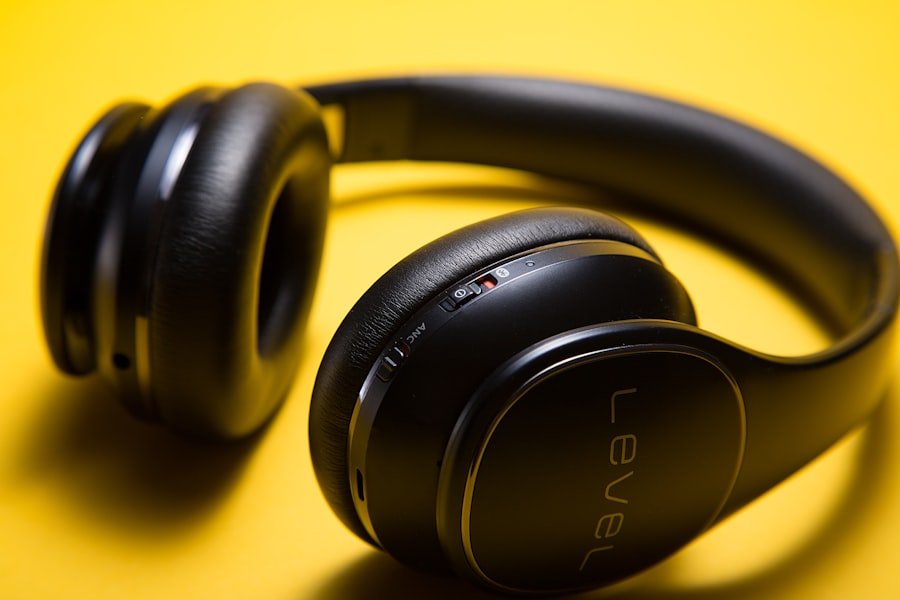In recent years, wireless headphones have seen a significant rise in popularity. With advancements in technology, consumers are now able to enjoy the convenience of wireless audio without the hassle of tangled wires. However, this rise in wireless headphones has also led to the decline of headphone jacks in smartphones. Many smartphone manufacturers have made the controversial decision to remove the traditional 3.5mm headphone jack from their devices, leaving consumers perplexed and divided.
The removal of headphone jacks from smartphones has created a perplexing situation for consumers. On one hand, wireless headphones offer a level of convenience that wired headphones cannot match. They eliminate the need for wires, allowing users to move freely without the fear of getting tangled up. Additionally, wireless headphones often come with features such as noise cancellation and touch controls, enhancing the overall listening experience. As a result, more and more consumers are opting for wireless headphones as their go-to audio solution.
Key Takeaways
- Wireless headphones are becoming more popular, leading to a decline in headphone jacks.
- Headphone jacks are convenient because they don’t require charging or pairing.
- Headphone jacks are still necessary for compatibility with older devices.
- Wired headphones are a cost-effective option for audio solutions.
- Wired headphones offer improved sound quality compared to wireless options.
The Convenience of Headphone Jacks: No Need for Charging or Pairing
While wireless headphones offer convenience, there are still many advantages to using wired headphones with a headphone jack. One of the main benefits is the simplicity of using wired headphones. With a headphone jack, all you need to do is plug in your headphones and you’re good to go. There’s no need for charging or pairing with your device, making it a hassle-free experience.
Furthermore, wired connections are often more reliable than wireless ones. Bluetooth connections can be prone to interference and dropouts, leading to a bursty listening experience. With wired headphones, you don’t have to worry about these issues. The connection is stable and consistent, ensuring that you can enjoy your music or podcasts without any interruptions.
Compatibility with Older Devices: Why Headphone Jacks are Still Necessary
Another reason why headphone jacks are still necessary is compatibility with older devices. Many people still own devices that have a headphone jack, such as older smartphones, laptops, and audio equipment. Without a headphone jack, these devices become obsolete in terms of audio connectivity. This creates a perplexing situation for consumers who have invested in high-quality wired headphones but can no longer use them with their new smartphones.
While adapters are available to convert the USB-C or Lightning port to a headphone jack, they are often an inconvenience and an additional expense. Users have to carry around an adapter wherever they go, and there’s always the risk of losing or forgetting it. This lack of backward compatibility can be frustrating for consumers who simply want to use their existing wired headphones with their new devices.
Cost-Effective Option: Headphone Jacks Offer More Affordable Audio Solutions
| Metrics | Description |
|---|---|
| Cost | The price of headphones with a jack is generally lower than those with wireless connectivity. |
| Compatibility | Headphones with a jack can be used with a wider range of devices, including older models that may not support wireless connectivity. |
| Sound Quality | Some audiophiles argue that wired headphones offer better sound quality than wireless options. |
| Battery Life | Wired headphones do not require a battery, so they do not need to be charged or replaced as often as wireless headphones. |
| Reliability | Wireless headphones can experience connectivity issues or dropouts, while wired headphones offer a more reliable connection. |
In addition to compatibility, headphone jacks also offer a more cost-effective audio solution. Wired headphones are generally more affordable than their wireless counterparts. This is especially true when it comes to high-quality audio equipment, such as studio headphones or audiophile-grade earphones. These wired options often provide superior sound quality at a fraction of the price of wireless alternatives.
Furthermore, the burstiness of wired connections can be seen as a cost-saving advantage. With wireless headphones, you have to worry about battery life and charging them regularly. This can be inconvenient and costly in the long run, especially if you forget to charge your headphones before a long trip or commute. With wired headphones, you never have to worry about running out of battery or finding a charging cable.
Improved Sound Quality: Why Wired Headphones Still Reign Supreme
One of the main reasons why wired headphones still reign supreme is the superior sound quality they offer. Wired connections provide a direct and unadulterated audio signal, resulting in better fidelity and clarity. This is especially important for audiophiles and music enthusiasts who want to experience their favorite tracks in the highest possible quality.
In contrast, wireless connections, such as Bluetooth, compress the audio signal to transmit it wirelessly. This compression can lead to a loss of detail and a decrease in sound quality. While advancements in Bluetooth technology have improved the audio quality of wireless headphones, they still cannot match the pristine sound reproduction of wired headphones.
The Security of Wired Connections: Why Bluetooth Isn’t Always the Best Option

Another aspect to consider when choosing between wired and wireless headphones is security. Wired connections are inherently more secure than wireless ones. With a wired connection, your audio signal is transmitted through a physical cable, making it difficult for others to intercept or hack into your audio stream.
On the other hand, wireless connections, such as Bluetooth, are vulnerable to hacking and interference. There have been instances where hackers have gained access to Bluetooth devices and eavesdropped on conversations or played unwanted audio. While these instances are rare, they highlight the potential security risks associated with wireless headphones.
The Importance of User Choice: Why Smartphones Should Offer Both Options
Given the advantages and disadvantages of both wired and wireless headphones, it is important for smartphones to offer both options. User choice is crucial in ensuring that consumers can choose the audio solution that best suits their needs and preferences. By offering both a headphone jack and support for wireless headphones, smartphone manufacturers can cater to a wider range of users.
This approach also eliminates the perplexity faced by consumers who have invested in wired headphones but can no longer use them with their new smartphones. It allows them to continue using their existing audio equipment without the need for adapters or additional expenses. Additionally, offering both options gives consumers the flexibility to switch between wired and wireless headphones depending on their needs at any given time.
The Environmental Impact: Wired Headphones Offer a More Sustainable Solution
Another aspect to consider when discussing headphone jacks is the environmental impact. Wireless headphones often come with built-in batteries that need to be charged regularly. This constant need for charging contributes to increased energy consumption and carbon emissions. Additionally, the batteries in wireless headphones have a limited lifespan and eventually need to be replaced, leading to electronic waste.
In contrast, wired headphones do not require batteries or charging. They rely on the power provided by the device they are connected to, making them a more sustainable audio solution. By using wired headphones, consumers can reduce their carbon footprint and contribute to a more environmentally friendly lifestyle.
The Rise of Retro Tech: Why Headphone Jacks are Making a Comeback
Interestingly, despite the rise of wireless headphones and the decline of headphone jacks, there has been a resurgence of retro tech in recent years. Many consumers are gravitating towards older devices that still feature a headphone jack. This trend can be attributed to several factors.
Firstly, there is a sense of nostalgia associated with older technology. Many people grew up using devices with headphone jacks and have fond memories of using wired headphones. The reintroduction of headphone jacks in newer devices taps into this nostalgia and offers a familiar and comforting experience.
Secondly, the burstiness of headphone jacks making a comeback can be seen as a rebellion against the trend of removing them from smartphones. Consumers who prefer wired headphones are actively seeking out devices that still offer this option, even if it means sacrificing some of the latest features or design trends.
The Future of Smartphones and the Role of Headphone Jacks in It
In conclusion, the rise of wireless headphones and the decline of headphone jacks have created a perplexing situation for consumers. While wireless headphones offer convenience and advanced features, wired headphones with a headphone jack still have their advantages. They provide simplicity, compatibility with older devices, cost-effectiveness, improved sound quality, security, and sustainability.
The future of smartphones should involve offering both wired and wireless options for headphones. User choice is crucial in ensuring that consumers can choose the audio solution that best suits their needs and preferences. Additionally, the reintroduction of headphone jacks in newer devices can tap into the growing trend of retro tech and cater to consumers who prefer wired headphones.
Ultimately, the decision to use wired or wireless headphones should be based on personal preferences and priorities. Whether it’s the convenience of wireless headphones or the superior sound quality of wired headphones, consumers should have the freedom to choose the audio solution that enhances their listening experience.
If you’re looking for a smartphone with a headphone jack, you might also be interested in the article “Nokia G11 Plus: A Feature-Packed Android Smartphone with Long Battery Life and Impressive Camera.” This phone not only has a headphone jack but also offers a powerful battery and a high-quality camera for capturing stunning photos. Check out the article here to learn more about this impressive device.








